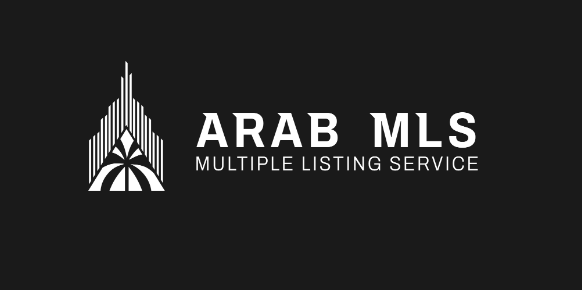Ensuring fair housing compliance in Multiple Listing Service (MLS) listings is a critical responsibility for real estate professionals. The MLS is a widely used platform that provides detailed property information to agents, buyers, and renters. However, all property listings must adhere to fair housing laws to prevent discrimination and promote equal access to housing opportunities. This article explores what fair housing laws entail, how they apply to MLS listings, and best practices for maintaining compliance.
Understanding Fair Housing Laws

Fair housing laws are designed to prevent discrimination in housing transactions. The primary law governing fair housing in the United States is the Fair Housing Act (FHA), which was enacted as part of the Civil Rights Act of 1968. The FHA prohibits discrimination based on race, color, religion, sex, national origin, disability, and familial status.
For instance, it is illegal to refuse to sell or rent a property to someone based on their race or national origin. Similarly, it is unlawful to set different terms or conditions for renting or selling a home based on familial status, such as the presence of children. These protections extend to all aspects of housing transactions, including advertising, financing, and the provision of services.
The FHA also mandates that reasonable accommodations must be made for people with disabilities. For example, a landlord must allow a tenant to install grab bars in the bathroom or a wheelchair ramp at the entrance if necessary for accessibility.
What Is the MLS and Why Is Compliance Important?
The MLS is a comprehensive database used by real estate agents to list properties for sale or rent. It is a powerful tool for sharing property information with other agents and potential buyers, offering detailed descriptions, photos, pricing, and amenities.
However, because MLS listings are widely accessible and highly influential, they must comply with fair housing laws. Any discriminatory language, imagery, or practices can result in serious legal consequences. Non-compliance can lead to fines, lawsuits, license suspension, and reputational damage.
For instance, using language like “perfect for young professionals” could be considered discriminatory against older adults or families with children. Likewise, stating that a property is “near a church” could be perceived as religious steering, potentially violating fair housing laws.
Common Fair Housing Violations in MLS Listings
Fair housing violations in MLS listings can occur in several ways. The most common issues involve language, images, and omitting accessibility information.
1. Discriminatory Language
MLS listings must use neutral language that describes the property itself, not the potential buyer or renter. Phrases like “no children allowed” or “ideal for single professionals” can be seen as discriminatory. The focus should remain on the property’s features, such as a “two-bedroom apartment with a spacious living room,” rather than the intended occupants.
2. Inappropriate Geographic References
MLS listings should avoid references that suggest a preference for certain racial, religious, or cultural demographics. Describing a neighborhood as “a great area for families” can be interpreted as discouraging single or elderly buyers. Instead, emphasize factual information, such as “located near public parks and shopping centers.”
3. Misleading or Exclusionary Photos
Photos included in MLS listings should reflect the property’s features without implying a preference for certain demographics. For example, repeatedly showcasing young, single tenants in all images may suggest the property is not family-friendly. It is best to use neutral images that highlight the property itself, not specific types of residents.
4. Failure to Include Accessibility Information
Failing to mention accessibility features in MLS listings can inadvertently exclude people with disabilities. If a property includes wheelchair ramps, wide doorways, or accessible bathrooms, this information should be clearly stated. This not only ensures compliance but also makes the property more attractive to a broader audience.
How to Ensure Fair Housing Compliance in MLS Listings
Maintaining fair housing compliance requires vigilance and a thorough understanding of the FHA guidelines. Here are some practical steps for ensuring that MLS listings adhere to fair housing laws:
Review Listings for Language and Tone
Before publishing an MLS listing, carefully review the text to ensure it does not include discriminatory language. Focus on the property’s amenities, layout, and location without suggesting a preference for specific demographics.
Emphasize Property Features, Not People
Descriptions should center on tangible property features, such as the number of bedrooms, square footage, and amenities. Avoid phrases that imply a preference for specific types of residents, such as “perfect for a single person” or “ideal for families.”
Highlight Accessibility Features
If the property has features that accommodate people with disabilities, such as a ramp or accessible bathroom, include this information. Not only is it legally required, but it also broadens the property’s appeal to a wider audience.
Use Neutral, Inclusive Photos
Photos should focus on the property rather than people. Highlight key areas such as the kitchen, living room, and exterior without implying a preference for certain demographics. Avoid images that exclusively show young professionals or families, as this can be perceived as targeting specific groups.
Provide Regular Training and Education
Real estate agents and staff members should receive ongoing training on fair housing laws. Understanding the nuances of fair housing compliance can help prevent unintentional violations. Training should cover appropriate language, the use of inclusive photos, and the importance of highlighting accessibility features.
Consult Legal Experts When in Doubt
When unsure about the legality of certain phrases or images in an MLS listing, seek guidance from legal professionals specializing in fair housing law. It is better to err on the side of caution than to risk potential violations.
Consequences of Non-Compliance
Non-compliance with fair housing laws can result in severe consequences, both legal and financial. Violators may face fines, legal settlements, and even the loss of their real estate licenses. Additionally, reputational damage can result in lost business opportunities and a decline in client trust.
A well-known example involved a real estate agency that repeatedly used phrases like “no children allowed” and “perfect for single professionals” in its listings. After several complaints, the agency was fined and required to undergo mandatory fair housing training. The incident not only resulted in financial losses but also damaged the firm’s reputation in the community.
Another case involved an agency that failed to mention accessibility features in its listings. A prospective renter with a disability sued the agency, claiming they were denied access to suitable housing. The court ruled in favor of the renter, emphasizing the importance of including accessibility information in all property listings.
Multiple Listing Services Software Providers
The backbone of MLS platforms comes from Multiple Listing Services Software Providers, who design the systems that make real estate transactions seamless. Their work ensures agents can efficiently manage listings and share property data.
Key players such as CoreLogic Matrix MLS, Black Knight Paragon, FBS Flexmls, Rapattoni, and Bridge Interactive provide IDX functionality, powerful reporting, and mobile tools.
ArabMLS is reshaping the industry in the MENA region, creating localized MLS systems like Egypt MLS, Dubai MLS, Saudi MLS, Qatar MLS, and Bahrain MLS to fit national markets while following international standards.
This delivers credibility, efficiency, and transparency that benefits every participant in the property sector.
Conclusion: Promoting Equal Housing Opportunities
Fair housing compliance in MLS listings is not just a legal obligation but a fundamental aspect of ethical real estate practices. By adhering to fair housing laws, real estate professionals can create a more inclusive and accessible housing market for all individuals, regardless of race, religion, sex, disability, or familial status.
To ensure compliance, agents should focus on neutral language, emphasize property features, include accessibility information, and avoid exclusionary images. Regular training and legal guidance are also essential for preventing unintentional violations and maintaining a fair, equitable approach to real estate transactions.
By implementing these best practices, real estate professionals can protect themselves from legal risks while promoting fair housing for everyone.













